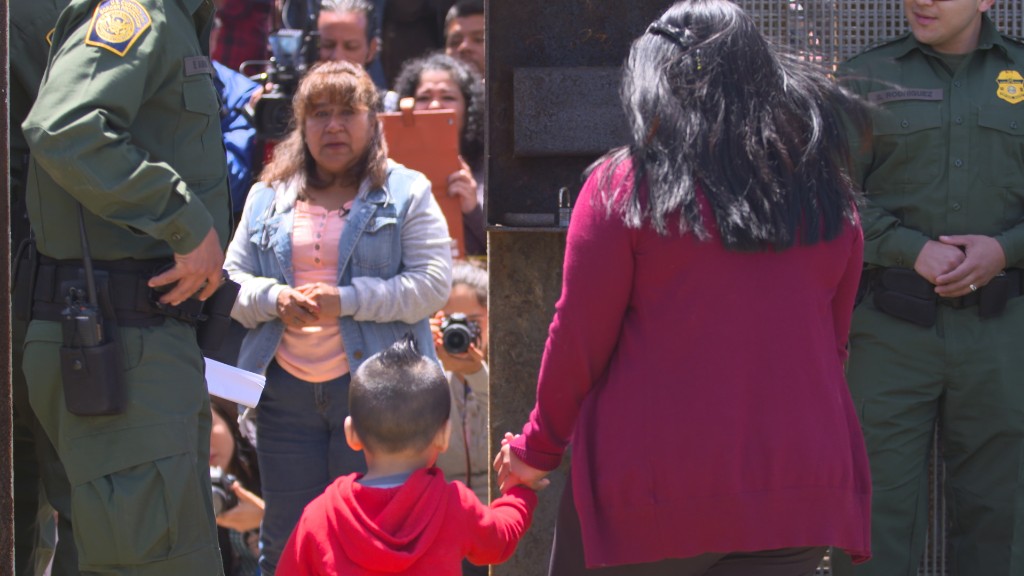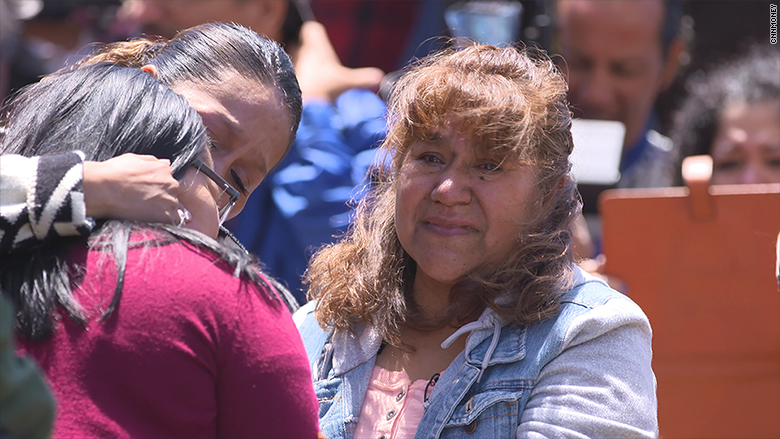
Gabi Esparza hasn't seen her mother and sister face-to-face in nine years. But last weekend, she got to see them for three minutes.
"We just started crying," Gabi said following the meeting. "When I last saw them, I was 16. And now I'm a mom, I have my family. I still can't believe that this happened."
Gabi reunited with her mother, Maria del Carmen, and sister, Susana del Carmen, at Friendship Park on the U.S.-Mexico border between San Diego and Tijuana. It's the only place along the 18-foot tall border fence that the U.S. Border Patrol has opened -- and this is only the third time the agency has done so.
Gabi lives in the United States through the Deferred Action for Childhood Arrivals, or DACA, program, which allows immigrants who arrived in the U.S. as children -- and who were under the age of 31 as of June 2012 -- to stay and work legally for two years.
Her status, however, means she can't leave the country. Meanwhile, her mother and sister -- both Mexican citizens -- are waiting to enter the U.S.

Five other families like Gabi's were pre-selected through an application process by the U.S. Border Patrol to spend three minutes together at Friendship Park on the Mexican holiday Children's Day.
Related: Texas now ties New York for second largest immigrant population
"Not only are we here to enforce our immigration laws and protect our border 24/7, our men and women give back to the community as much they give back to us," said Wendy Lee, a public affairs officer with U.S. Border Patrol.
Friendship Park was inaugurated by First Lady Patricia Nixon in 1971, when loosely placed barbed wire separated the two countries.
When Mrs. Nixon arrived at the park, she asked her security to cut the wire, so she could visit with a crowd of Mexican citizens. "I hope there won't be a fence here too much longer," she said at the time.
Since 1971, the fence at Friendship Park has only gotten bigger, having gone through two iterations -- one in 1994 and then again in 2007. Most recently it was reinforced with metal mesh in 2012.
"In 1986, there were 628,000 apprehensions in this area. It was very much like the Wild West," said U.S. Border Patrol agent Frank Alvarado, who monitors Friendship Park. "Hundreds of people were coming across at a time. There were only about 450 border patrol agents. Now we are up at 2,400 approximately San Diego sector wide, and we're apprehending 27,000, that's almost a 97% decrease," he said.

The fence at Friendship Park is one of the reasons Enrique Morones started Border Angels -- a non profit that advocates for humane immigration reform and the reunions at Friendship Park.
"When the wall was built, nobody expected all these deaths," said Morones. "They thought that people would stop coming in 1994, but they didn't. They started crossing in more dangerous areas. So instead of one to two people dying a month, it was one to two people dying per day," he said.
Related: I want to bring health care to undocumented immigrants
According to the United States Customs and Border Patrol, over 6,000 deceased migrants have been found on the U.S. side of the border since 1998. Morones says that number could be almost double, because it doesn't take into account deaths on the Mexican side, and those who haven't been found. But business in the San Diego area is booming and more U.S. citizens are moving closer to the fence.
"Commercial industries aren't going to invest and people won't put their families, and raise their families in an area that's generally unsafe," said Alvarado. "So without this fence, without the agent's presence here, we wouldn't have the people that reside here."
Border Angel's Morones could think of nothing better than the wall coming down. "My dream is that wall coming down. Every summer, more people die because of that wall than the entire history of the Berlin Wall," he said.
For Esparza, it's more personal. "I hope that one day there is no border and we can all see our family members once again. "
"This is just the beginning," Esparza cried, as she hugged her mother and sister.
